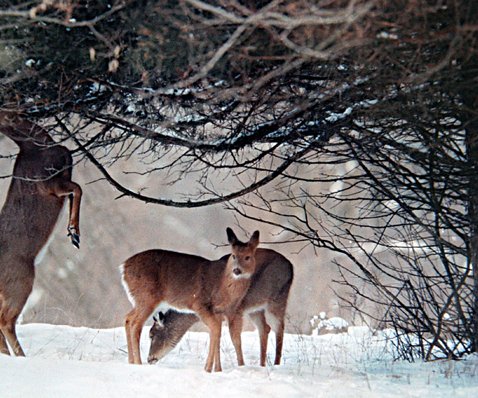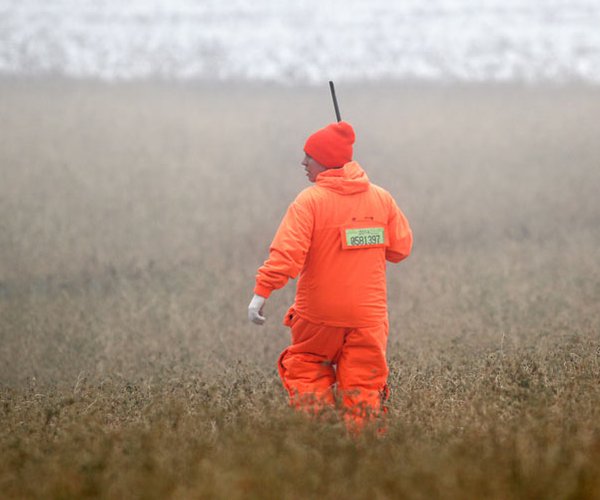Rare autumn weather has not dampened enthusiasm for spotting colorful ring-necked rooster pheasants, stately male and hen ruffed grouse, sometimes gobbling wild tom turkeys, and a charm of feeding finches taking what we place close enough to a window for admiring.
One glitch is wet pheasant tails knotting together when roosters are being transferred to release sites on public hunting land in southern Wisconsin.
“The birds can’t be wet when we catch and haul them to be released,” said Kelly Maquire, manager at the Wisconsin Department of natural resources game farm near Poynette, Wisconsin. “The feathers get so tied together the wildlife biologists have to cut them apart before setting them free. We don’t like doing that because one character hunters always remark about is the beautiful, long tails our pheasants develop.”
A few more releases will take place right after the nine-day deer season. In addition 25 properties in southern Wisconsin will get a “holiday” release starting December 16.
Pheasant and ruffed grouse (Zone A) seasons close January 5, 2025. Wild turkey season also closes January 5, 2025 in Zones 1-5.
Other turkey and grouse zones closed earlier.
Wild turkey gobbling, while minor during fall and winters, is clearly noticed when the first deer rifle shots are fired opening day.
Shock gobbling it’s called.
Hunters have registered 3,121 wild turkeys, some of which are likely to be consumed during Thanksgiving, as well as some choice cuts of venison taken early in the gun deer season.
“Now, after a no-ship episode of nyjer finch feed from Ethiopia was delayed six weeks, everything is back on track,” Bob Ross, owner at Wild Birds Unlimited on Old Sauk Road in Middleton, Wisconsin, said. “It’s all good now and prices are stable.”
Even though it has rained a bunch this autumn, birds still need water. One way to increase bird activity at feeding stations is to add a water bath. They’ve been a hot item Ross said, even though the temperature has been above the freezing point most of the time.
All the winter birds have returned, juncos in particular and in large numbers, but none of the specialty birds including pine and evening grosbeaks have been seen. They were missing last winter, too.
Pheasants and wild turkeys show up at feeders, but rarely a ruffed grouse. There are not many “partridges” in southern Wisconsin.
Pileated and red-headed woodpeckers are sometimes lured in with suet and peanuts, but these birds are rare unless a woods is close.
Redheads are particularly fond of savannas and pileated woodpeckers like to have a number of dead trees, including aspens where they can get large black ants deep inside the wood.
Acorns, in particular, have been scarce this fall, but black walnuts not so much. Expect gray squirrels to be looking for food beyond the forests.
Ross suggested trying golden safflower, which has higher amounts of fats, oils, and protein than most common seeds. “It may take birds a while to get used to this seed, but once they do, be ready,” he said.
Deer registrations show numbers approaching 100,000 animals taken before the nine-day gun deer season opener with 97,036 total registrations from previous and ongoing hunts. As expected, antlered deer made up more than 60 percent of the kill with 61,952 registrations, and 35,084 antlerless registrations were reported.
Some of the local, native evergreens are being cut for decorations including white pine, white cedar, and red cedar. Those greens, along with red-osier dogwood stems contrast one another.
Balsam and Fraser firs are the most common Christmas tree choices and generally come from tree farms rather than growing wild in southern Wisconsin.
Seed cones from white pine are scarce this fall. These are commonly used as decorations and fireplace tinder.
An abundance of squirrels and cottontail rabbits mean fine small game hunting until the end of February 2025.
Witchhazel shrubs continue to hold some yellow leaves and a few flowers with yellow petals resembling crinkle cut packing paper.
Remember that as long as a gun deer season is ongoing in an area, blaze orange clothing must be worn by most other hunters such as rabbit and turkey pursuers. The muzzleloader deer hunt and statewide antlerless deer hunt, both considered gun deer hunts, follow the traditional gun deer season.
— Jerry Davis is an Argyle native and a freelance writer who lives in Barneveld. He can be reached at sivadjam@mhtc.net or at 608-924-1112.




